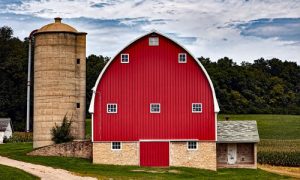Agriculture stories are everywhere. Perhaps more so than on other beats, though, it pays to get out of the office.
If you are reporting in a rural area, you should stop by a local café where farmers have breakfast. You should pop by the grain elevator and strike up a conversation. Or, to the extent possible, just listen.
If there’s a local co-op, go down and meet some of the gang. Pop in at the local office of the Farm Service Agency or the Natural Resources Conservation Service.
These people know the local farmers, and they know what’s going on, from soil conservation and tillage trends to projects intended to cut erosion and protect waterways from siltation (which, by the way, raises the cost of treating drinking water, which in turn affects anyone with a tap).
Farmers can be a reserved bunch. But they generally are some of the proudest and friendliest people around, and if you can spend some time gaining their trust, they’ll be glad to tell you about their business. These are people who follow the environmental conditions that affect their business by the day. Has it rained enough? Too much? How is the soil moisture? Are we in a drought? Will it be a bad year for pests? Too wet to get into the field?
You should also comb key websites, from the Farm Bureau to the U.S. Department of Agriculture. It’s also a good idea to check environmental sites, such as the Environmental Working Group, your local environmental council, if you have one, or Sierra Club. The environmental effects of agriculture are big news, and have one Pulitzer Prizes for the likes of the now-retired James Risser, who once covered those issues for The Des Moines Register.All these questions could lead to a story for you. But it’s good to think about topics that hit home. When you shop for groceries, pay attention to produce and meat prices. They can be ready stories. When grain prices started rising after years of $2 a bushel corn, that was good news for the farmers who grow those crops. But high-priced grain often means price hikes at the meat market, which directly affects many of your readers. It can put pressure on biofuels plants, too.
And there can be weirdness in the produce markets, brought on by everything from frost and freeze problems in Florida’s orchards to droughts across the land. One time some years ago tomatoes were selling in Des Moines for more per pound than the top sirloin steak. That’s a story consumers will read, even if it’s not necessarily good news.

And don’t forget other angles related to agriculture. The farm crisis of the ‘80s was front page news for years. Get to know the local bankers who lend farmers money, and watch for signs of trouble. A sure one: a long list of farm sales in the classifieds.
Farming can be dangerous, and sometimes we don’t pay enough attention to the loss of limbs, or lives, on the back forty. Reporter Tom Knudson of the Sacramento Bee won a Pulitzer while he was at the Des Moines Register, reporting on those very issues. Look for patterns that might suggest a manufacturer’s equipment has safety problems.
If you can, attend your local Farm Bureau convention, where delegates decide policy. These can be controversial and attract opposition, but they show what is on farmers’ minds and how they would like to see the agricultural world run. Watch the newsletters and websites of key members of Congress – those on the agriculture committee, for example – to see what is brewing.
Anytime the Farm Bill is up for a rewrite there is potential for all kinds of news. Will lawmakers make this the year that they dredge up the money to pay for more soil conservation? Will farmers be required to use sound conservation techniques in exchange for federal assistance? Will there be any action to stem the flow of nitrogen from the Corn Belt to the Gulf of Mexico, where the fertilizer causes oxygen depletion in an area commonly called the Dead Zone?
As with many beats, it’s best to look for ways agriculture affects lives, on and off the farm. You won’t have to look far for impact.










